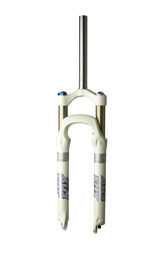How long until you’re riding a Magnesium Frame?
 taneously alluring and frustrating to engineers.
taneously alluring and frustrating to engineers. At first glance, magnesium’s characteristics would suggest that it’s a ‘can’t miss’ candidate to create the next generation of bikes. Magnesium is two-thirds the density of Aluminum (and is said to have higher vibration damping), as strong or stronger, and is the eighth most abundant element on earth. So, you can see why engineers are inherently drawn to this metal when examining possibilities for the future. However, the element’s semi-volatile nature and pitfalls in the manufacturing process have been enough to keep the production of magnesium bikes from becoming a financially viable option for large companies.
While I mentioned magnesium’s intrinsic strengths in the context of bike building, it also has some intrinsic weaknesses. When in alloys or in mass magnesium is extremely stable, but when shaved, in powder form, or in extremely small quantities, magnesium is exceptionally flammable. This is not so much a worry for the final products, but during manufacturing the element is often utilized in these fickle states and there have been reports of small amounts of magnesium combusting in factory settings.
Magnesium also, although slowly, reacts with oxygen and water - making its resistance to tarnishing and deterioration less than that of the commonly used metals in today’s bikes.
Along with these concerns are the problems with efficiently fabricating high performance frames and parts from the metal. Magnesium is decidedly harder to weld than aluminum or steel, and is usually fabricated via die-casting. Die casting, at this juncture, is extremely costly, and each different frame size or component line would require its own cast, making the cost of production fairly exorbitant.
(Fox's 32F80 Fork)
That being said, magnesium has been an integral part in the production of space shuttles, airplanes, automobile engines, and has been crafted, by select manufacturers, into high end bicycles. I’ve never ridden a magnesium bike, but read reviews that claim the disparity is comparable to that of steel and aluminum. Many upper tier components are currently forged from magnesium, and it is commonly used on the lower legs of high end front suspensions, like many of Fox Racing’s F Series, to increase damping and save grams.
The bottom line is that, for manufacturers right now, the inability to ensure quality control and the inflated costs of researching and manufacturing magnesium bikes outweigh the potential benefits. Many people feel that technology is on the verge of finding solutions to these problems, while others see a long expensive road that will inevitably lead to more problems. I guess only time will tell.



0 Comments:
Post a Comment
Subscribe to Post Comments [Atom]
<< Home